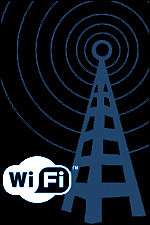Scientists demonstrate first contagious airborne WiFi virus

Researchers at the University of Liverpool have shown for the first time that WiFi networks can be infected with a virus that can move through densely populated areas as efficiently as the common cold spreads between humans.
The team designed and simulated an attack by a virus, called "Chameleon", and found that not only could it spread quickly between homes and businesses, but it was able to avoid detection and identify the points at which WiFi access is least protected by encryption and passwords.
Researchers from the University's School of Computer Science and Electrical Engineering and Electronics, simulated an attack on Belfast and London in a laboratory setting, and found that "Chameleon" behaved like an airborne virus, travelling across the WiFi network via Access Points (APs) that connect households and businesses to WiFi networks.
Areas that are more densely populated have more APs in closer proximity to each other, which meant that the virus propagated more quickly, particularly across networks connectable within a 10-50 metre radius.
Alan Marshall, Professor of Network Security at the University, said: "When "Chameleon" attacked an AP it didn't affect how it worked, but was able to collect and report the credentials of all other WiFi users who connected to it. The virus then sought out other WiFi APs that it could connect to and infect."
"Chameleon" was able to avoid detection as current virus detection systems look for viruses that are present on the Internet or computers, but Chameleon is only ever present in the WiFi network. Whilst many APs are sufficiently encrypted and password protected, the virus simply moved on to find those which weren't strongly protected including open access WiFi points common in locations such as coffee shops and airports.
Professor Marshall continued said: "WiFi connections are increasingly a target for computer hackers because of well-documented security vulnerabilities, which make it difficult to detect and defend against a virus.
"It was assumed, however, that it wasn't possible to develop a virus that could attack WiFi networks but we demonstrated that this is possible and that it can spread quickly. We are now able to use the data generated from this study to develop a new technique to identify when an attack is likely."
The research is published in EURASIP Journal on Information Security.
Provided by University of Liverpool

















